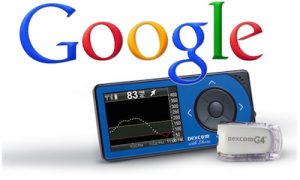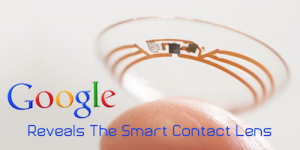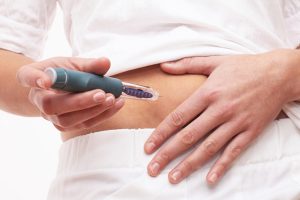The Google and Diabetes Connection
Technology platform giant GOOGLE, via their Life Sciences division, is using their expertise in electronic miniaturization along with their data collecting/ sharing abilities to team up with Dexcom, makers of a popular Continuous Glucose Monitoring Sensor shown above (CGMS) to make much smaller continuous monitoring device that might be as small as a dime and worn like a bandage like patch. The data collected will be transmitted to a smartphone. The data can undergo analytics to help direct therapy, not only for the individual, but also due to large data collection, might help with care population based.
Google is also working with pharmaceutical company Novartis on the Google Contact Lens that obtains glucose readings through your tears. They have already received the patent on this and it’s in the works.
Why is Google in on the diabetes monitoring game (besides it being an estimated 17 billion dollar industry)? For one thing, currently the Dexcom as well as the Minimed/Medtronic pump with continuous glucose sensor have iPhone applications available. Though Minimed is working on getting their app on Android, Google being in on it “ground floor” obviously will help promote Android and the Google brand.


